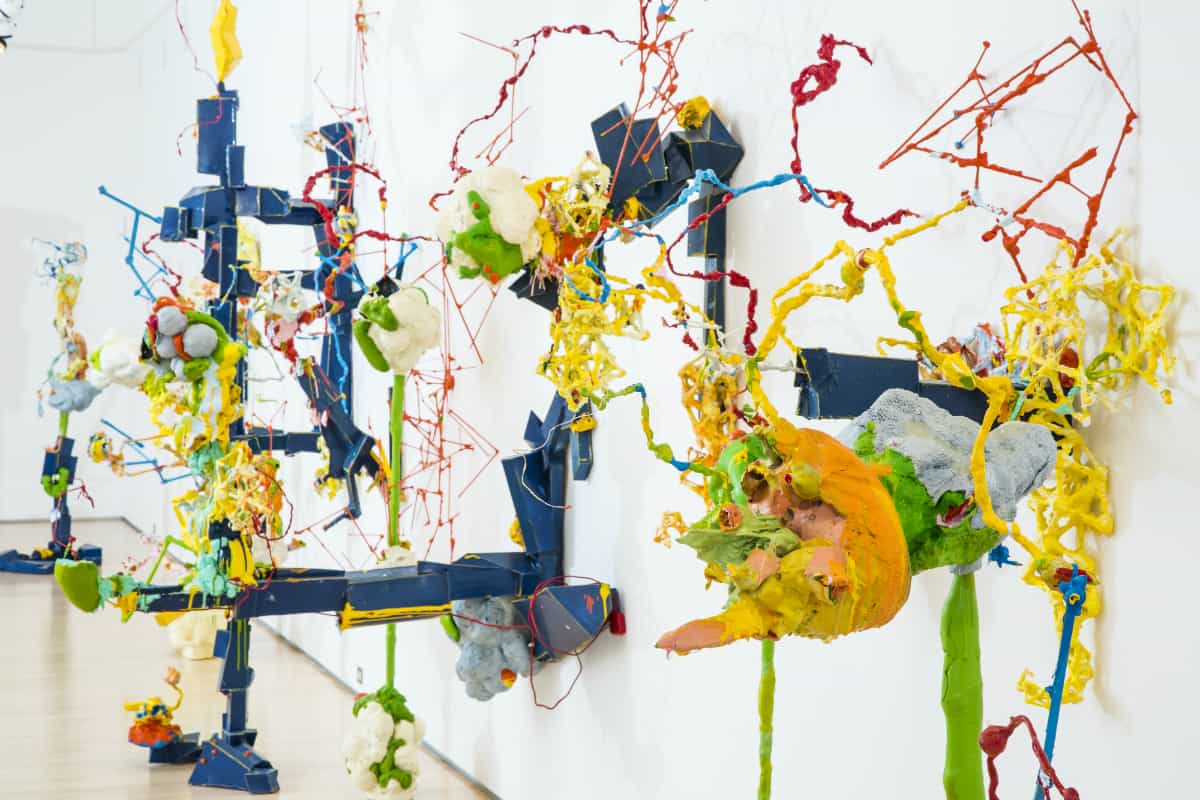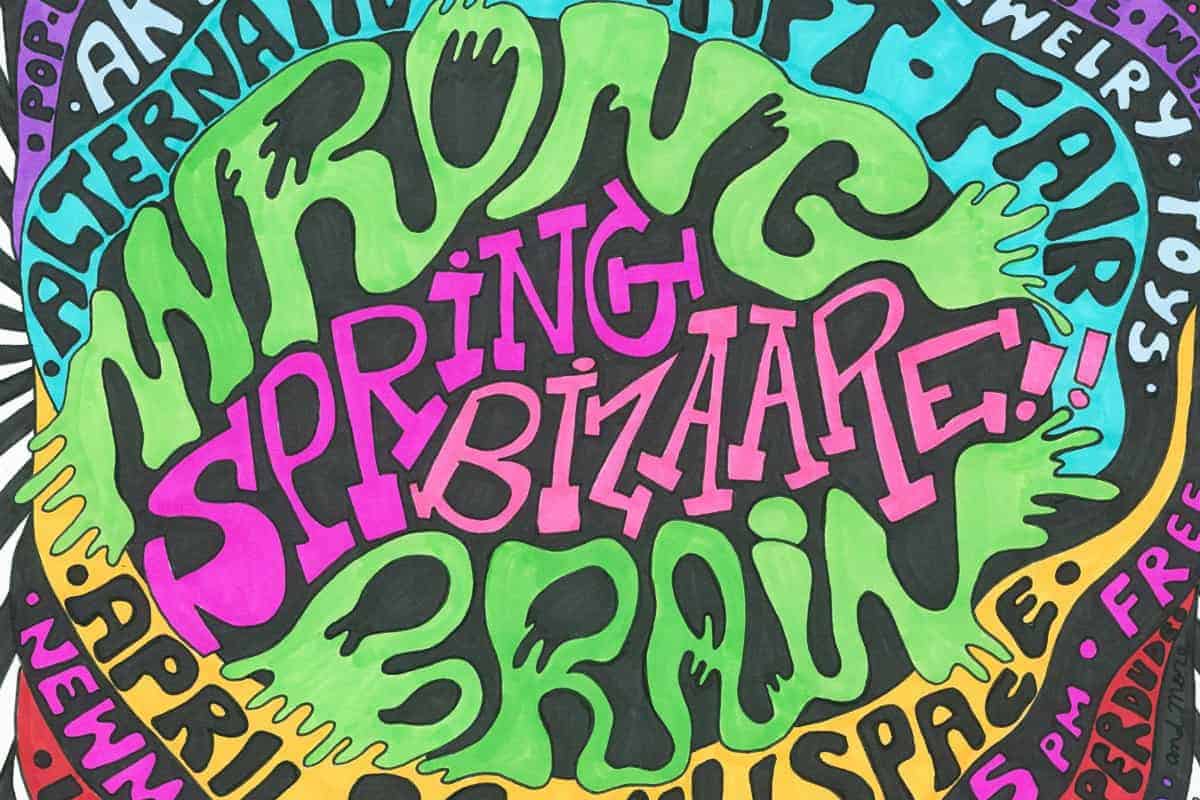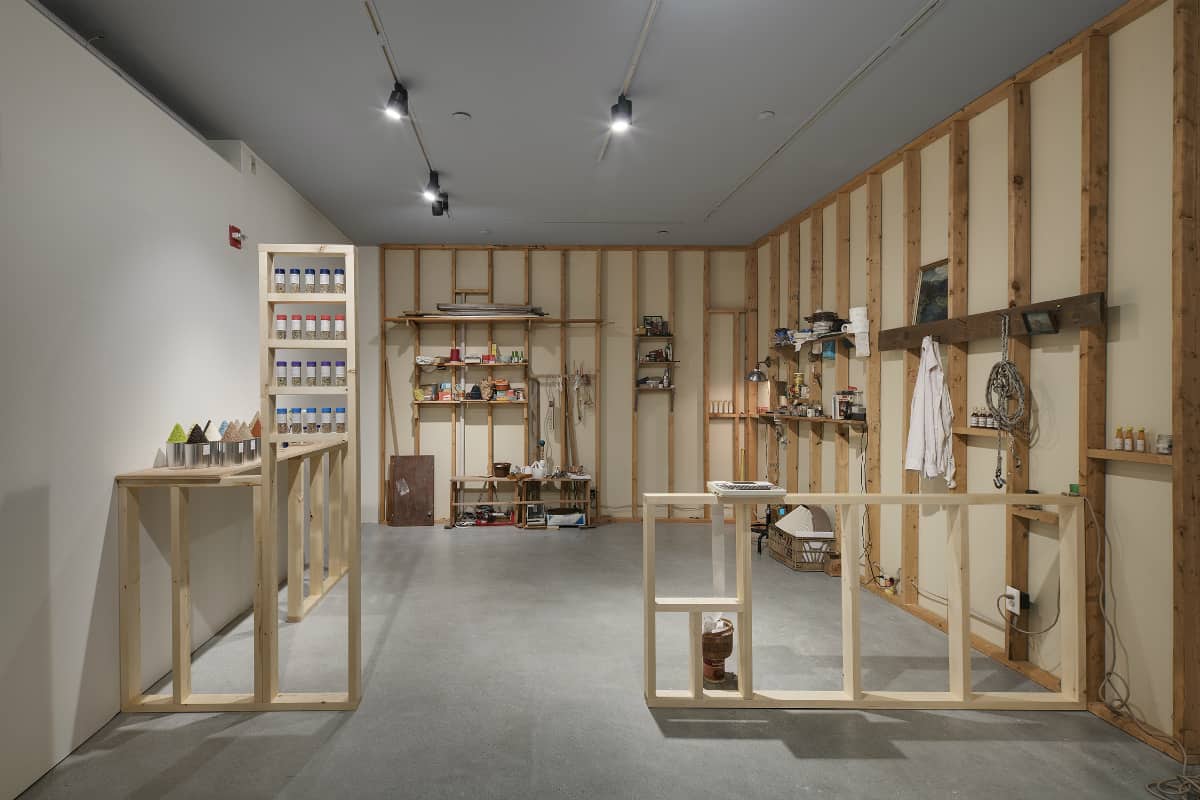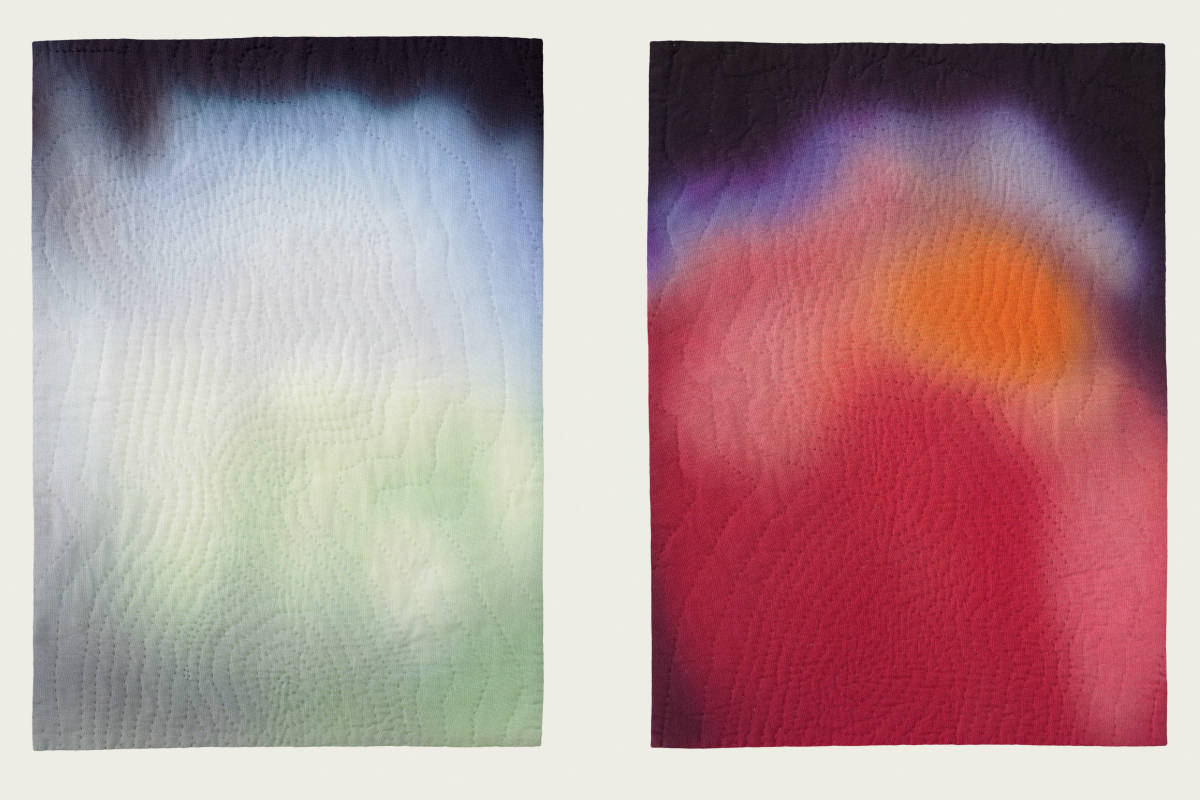Working with malleable materials like clay, Jackie Brown creates immersive sculptures that explore living forms and structures.
Experimentation and connectivity are the foundation of Jackie Brown’s artistic process. The Maine artist works with malleable materials like clay, plaster, foam, and concrete to create immersive experiences that express her ideas about nature, science, and the interconnection of living systems. Her colorful organic sculptures are part of Materiality: The Matter of Matter, an exhibition at the Center for Maine Contemporary Art (CMCA) through February 11, 2018. “Each artist (in the exhibit) engages matter in different ways and examines the relationship between materials,” Brown says. “That’s a huge part of what I do.”
Brown plays with structure, a concept reflected in the synthesis of her work. Her sculptures are imagined biological systems. “I generate a lot of parts that I combine in to larger forms,” she says. “I’ve always enjoyed the challenge of sculpture and 3D. It helps me look at what’s under the surface of things.”
The connections between various living systems have fascinated Brown since she was an undergraduate at Hamilton College, taking classes in biology, philosophy and psychology. “That was the beginning,” she says. “I made connections between different subjects I studied and I really got involved with process and material.” At first she worked on images of the human figure; her art evolved after she discovered the work of neurologist and author Dr. Oliver Sacks, noted for his writing and research about the human brain. “I was really excited about his work,” she says.
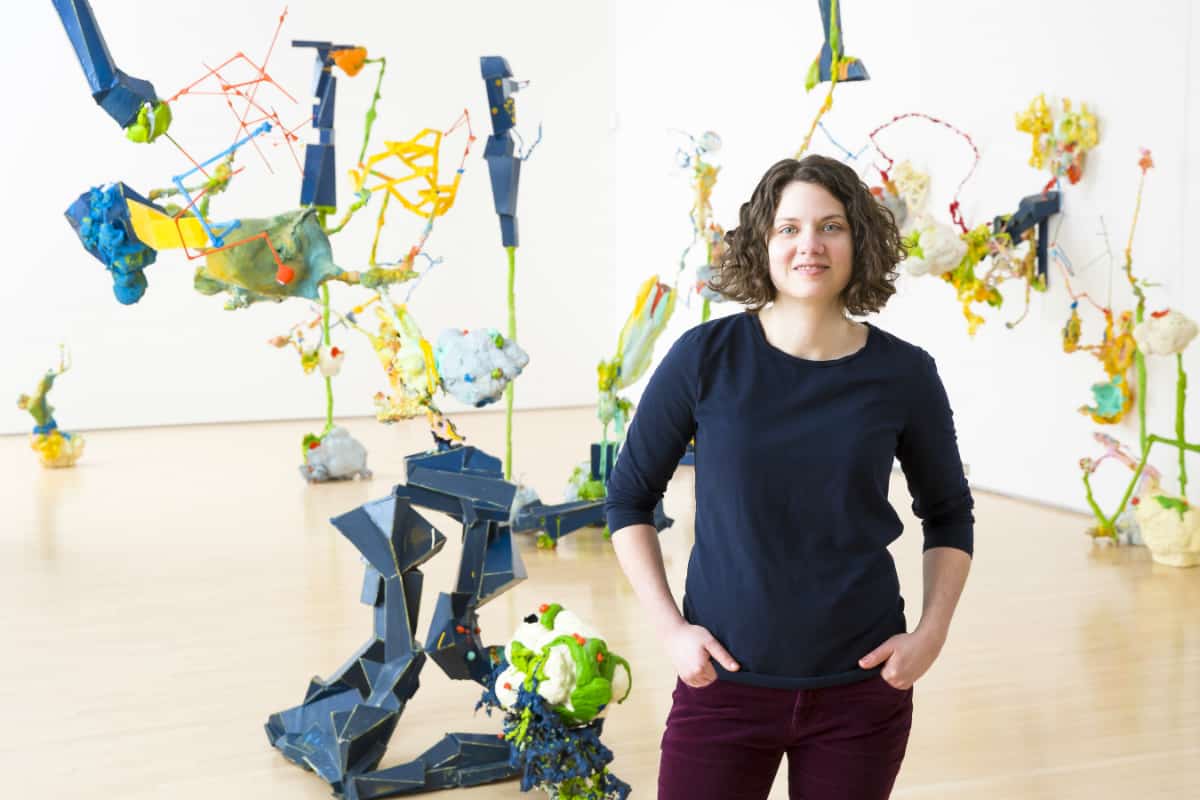
Jackie Brown in Mutated Growth installation
Sacks’ writings inspired Brown’s preternatural “Brain Fruit” series, created using, among other materials, plaster molds of wrinkled Osage oranges (the series is part of the installation by Brown in the Materiality exhibition, each with their own visual language but all ultimately united conceptually). The forms are both grotesque and playful. “I was interested in creating something that was otherworldly but also imaginative and playful,” Brown says. “The colors counterbalance the grotesque qualities. It makes you think: is this a healthy growth? Harmful? Benign or ambiguous?”
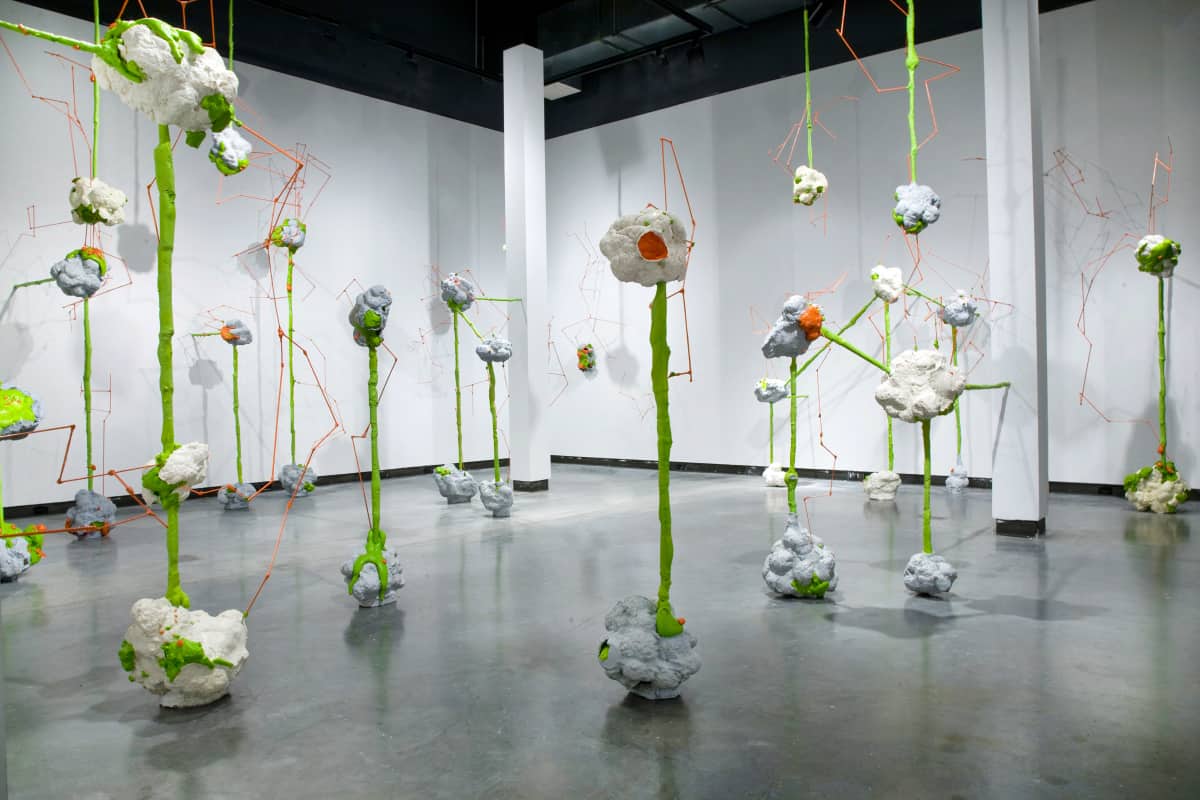
Brain Fruit
Brown is also an educator. Three years ago, she joined the art faculty at Bowdoin College in Brunswick, as an assistant art professor. She’s on sabbatical this year, combining extended studio time with residencies at the Archie Bray Foundation for the Ceramic Arts in Montana and at Emmanuel College in Boston. Her new work – “It’s so new I don’t really have a handle on it yet,” she says – is influenced by Maine. “My work is really shifting because of the landscape here and my interest in human interaction with living systems.” She trusts her materials and process to shape the final result.

